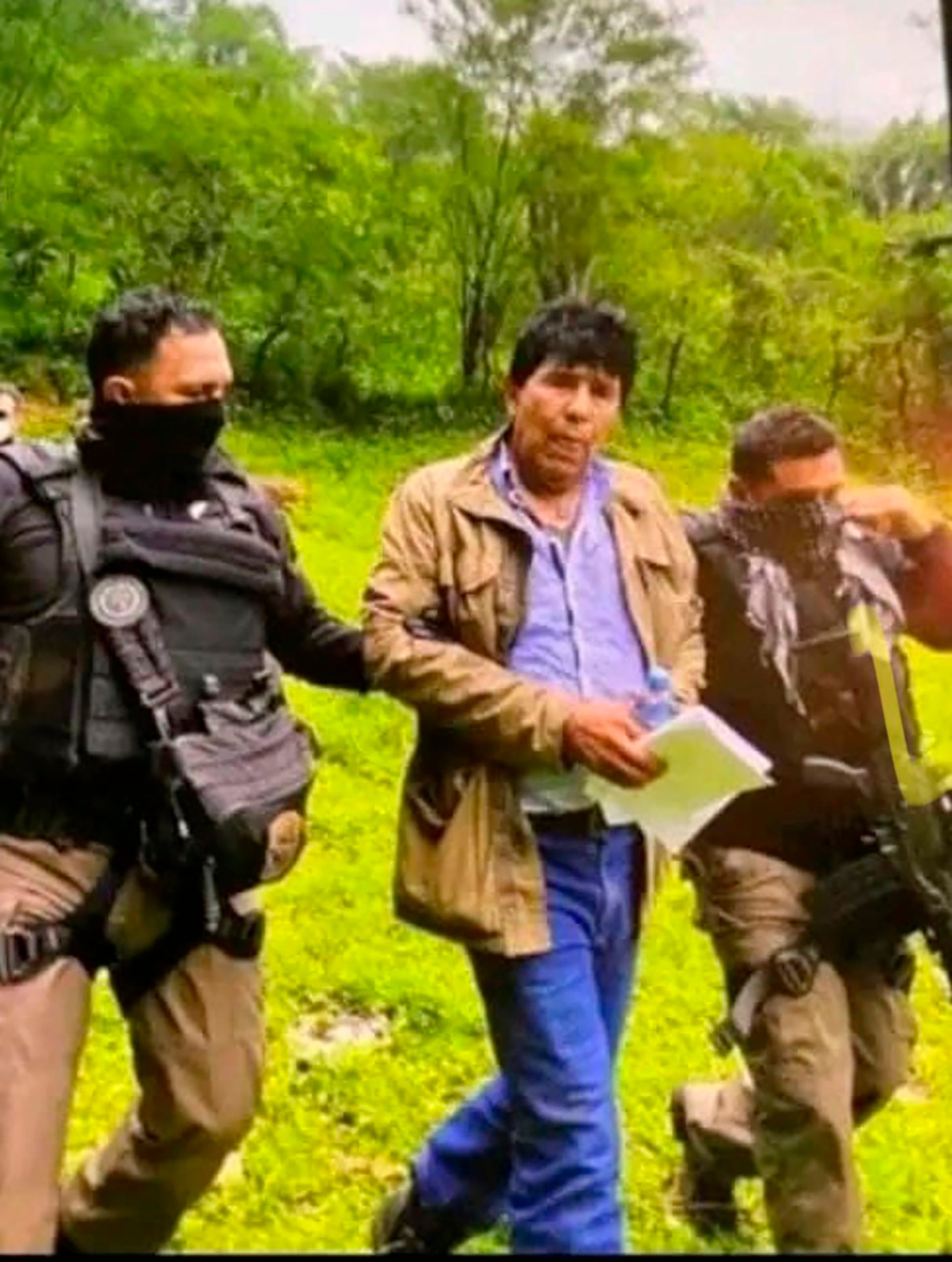EXPLAINER: 37 years later, Mexican drug lord to face justice
The capture of fugitive drug lord Rafael Caro Quintero was hailed by U.S. authorities as an example of cooperation with Mexico in the fight against drugs

The capture of fugitive drug lord Rafael Caro Quintero was hailed by U.S. authorities as an example of cooperation with Mexico in the fight against drugs. But in fact Caro Quintero had been the source of 37 years of tension between the two countries.
Caro Quintero was one of the primary suppliers of heroin, cocaine, and marijuana to the United States in the late 1970s and early 1980s. Mexican marines captured him in the mountains of northwest Mexico Friday.
Mexico had been slow in going after the former leader of the Guadalajara cartel for killing U.S. DEA agent Enrique “Kiki” Camarena in 1985, as well as several other U.S. citizens around the same time.
The U.S. had to nearly shut down border traffic to pressure Mexico to go after Caro Quintero in the 1980s, but even then the Mexican legal system wasn’t able to hold him in jail: in 2013 he walked out of prison on an erroneous decision by a Mexican appeals court, and had returned to his drug trafficking operations.
This time, Mexico has made it clear that Caro Quintero was arrested with the intention of extradition. His lawyers, however, quickly signaled through their court filings that the extradition process will be drawn out and it could be many months before he is seen in a U.S. courtroom.
WHO WAS KIKI CAMARENA AND WHY WAS HE KILLED?
Caro Quintero had blamed Camarena, the DEA agent, for a raid on a huge marijuana plantation that Caro Quintero’s cartel ran in northern Mexico in 1984. The next year, Camarena was kidnapped in Guadalajara, allegedly on orders from Caro Quintero. “What they wanted to do is they wanted to get information from Kiki relative to the investigations that the DEA was conducting in Mexico. They wanted to know who the informants were, that they were handling. They wanted to know the addresses where the agents live,” said Mike Vigil, the DEA’s former chief of international operations. “So they wanted to extract as much information from Kiki through horrific torture. And it was finally a blunt instrument blow to the head that caused Kiki Camarena’s … death.” His tortured form was found a month later.
WHY DID CARO QUINTERO THINK HE COULD GET AWAY WITH ALL THIS?
People today are accustomed to hearing about warring drug cartels in Mexico. It is hard to imagine the first generation of drug lords in Mexico in the 1980s: there was only one big cartel, the Guadalajara Cartel, and Caro Quintero, Fonseca Carrillo and Miguel Angel Felix Gallardo ran it. People like Joaquin “El Chapo” Guzman worked for them at that point — as did as many as 4,000 agricultural workers pressed into service growing marijuana on the gang’s 1,350-acre (545 hectare) marijuana plantation. “Given the fact that the cartel was the only cartel in Mexico in the eighties, they operated with complete impunity because they were paying off many, many individuals within the Mexican government for protection,” said Vigil. “So they figured that they could do whatever they damn well please as long as they paid money for protection.”
HOW DID CARO QUINTERO ESCAPE JUSTICE?
In August 2013, an appeals court in Caro Quintero’s home state overturned his 40-year sentence in the killing of Camarena and a Mexican government pilot. The panel of judges argued a state court should have overseen the case, not a federal one, and ordered his immediate release from a maximum-security prison. Mexico’s Supreme Court annulled the order releasing him months later, saying Camarena was a registered U.S. government agent and therefore his killing was a federal crime and had been properly tried. An arrest warrant was issued for Caro Quintero, who was long gone. Questions still swirl around his late-night release: Mexican prosecutors, who by law should have been notified, weren’t notified until hours after he was released in the middle of the night and disappeared in a car that had been waiting for him.
WHAT DID CARO QUINTERO DO WHILE HE WAS ON THE RUN BETWEEN 2013 and 2022?
Caro Quintero was added to FBI’s 10 most wanted list in 2018, with a $20 million reward for his capture. Mexican security analyst David Saucedo believes that the sudden renewed interest in his arrest may have stemmed from the deadly wave of overdoses in the United States from the synthetic opioid fentanyl. “I think that the FBI did that because of the deaths being caused in the United States due to fentanyl consumption,” said Saucedo. “When Caro Quintero got out of prison he takes up drug trafficking again and established the Caborca cartel in Sonora. But his criminal activities include shipping fentanyl.”
WHAT IS LIKELY TO HAPPEN TO CARO QUINTERO NOW?
Caro Quintero was notified this weekend that a process to extradite him to the United States has begun, but his lawyers have already filed for court injunctions that could stretch the legal process out over months, and perhaps years. He will wait out the process in a maximum security prison west of Mexico City. A grand jury in the Eastern District of New York indicted Caro Quintero in 2017 on a number of drug trafficking charges, as well as for conspiring to murder those who posed a threat to his narcotics activities.
Bookmark popover
Removed from bookmarks